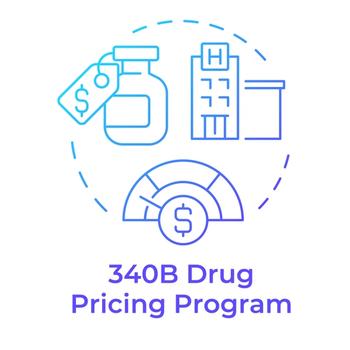
Long-term use of acid-suppressing drugs may be associated with increased risk of hip fracture
In a large, nested case-control study published in the Journal of the American Medical Association (JAMA), proton pump inhibitor (PPI) use was demonstrated to be associated with a 44% to 165% increase in the risk of hip fracture in patients aged >50 years.
In a large, nested case-control study published in the Journal of the American Medical Association (JAMA), proton pump inhibitor (PPI) use was demonstrated to be associated with a 44% to 165% increase in the risk of hip fracture in patients aged >50 years.
The authors remarked: "We found a significantly increased risk of hip fracture associated with long-term PPI therapy, particularly among long-term users of high-dose PPI."
The authors evaluated data from the General Practice Research Database (GPRD) from May 1987 through March 2003. The GPRD is an extensive collection of computerized medical records from select primary care practices. Patients included in the study were aged >50 years, were followed up in the database for ≥1 year, and had not had a hip fracture in the first year of database follow-up. After exclusion of patients not meeting the criteria, the study population consisted of 192,028 patients who received ≥1 prescription for a PPI and 1.4 million patients who did not receive any acid-suppressing therapy (either a PPI or histamine-2 [H2 ] receptor antagonist). Of these, 13,556 patients (11%) had developed a hip fracture after the first year of follow-up (cases). The cases were matched by sex, age, index date, and duration of follow-up with ≤10 patients who did not develop a hip fracture during follow-up, yielding 135,386 controls. Through multivariate logistic regression, the researchers found that patients exposed to >1 year of PPI use were significantly more likely to develop a hip fracture compared with patients not receiving any acid-suppressing therapy (adjusted OR=1.44; 95% CI, 1.30–1.59, P<.001). The risk of developing a fracture increased incrementally with each additional year of exposure to a PPI (adjusted ORs=1.22 at 1 year, 1.41 at 2 years, 1.54 at 3 years, and 1.59 at 4 years). A similar relationship was demonstrated between PPI dose and risk of fracture, with users of high-dose PPIs having a 165% increased risk of a hip fracture (adjusted OR=2.65; 95% CI, 1.80–3.90; P<.001). The association between PPI use and hip fractures was greater in men (adjusted OR=1.78; 95% CI, 1.42–2.22) than in women (adjusted OR=1.36; 95% CI, 1.22 –1.53).
The researchers noted that this was not the first study to demonstrate PPIs' detrimental effect on hip fracture risk. A study by Vestergaard et al in 2006 demonstrated a similar 45% increase in a patient's risk for hip fracture with PPI use. However, the authors of this more recent study noted that "Vestergaard et al observed neither a duration-response nor a dose-response effect associated with PPI therapy."
The researchers emphasized that prescribers "should be aware of this potential association when considering PPI therapy and should use the lowest effective dose for patients with appropriate indications. For elderly patients who require long-term and particularly high-dose PPI therapy, it may be prudent to re-emphasize increased calcium intake, preferably from a dairy source, and coingestion of a meal when taking insoluble calcium supplements."
The researchers hypothesized that the increased risk of hip fractures from PPIs and other acid-suppressing drugs may be the result of malabsorption of calcium, but they emphasized that their study was not designed to test this hypothesis and that additional studies are needed to clarify the mechanism by which PPIs increase fracture risk.
SOURCES Yang Y-X, Lewis JD, Epstein S, Metz DC. Long-term proton pump inhibitor therapy and risk of hip fracture. JAMA. 2006;296:2947–2953.
Vestergaard P, Rejnmark L, Mosekilde L. Proton pump inhibitors, histamine H2 receptor antagonists, and other antacid medications and the risk of fracture. Calcif Tissue Int. 2006;79:76–83.
Newsletter
Get the latest industry news, event updates, and more from Managed healthcare Executive.


















































